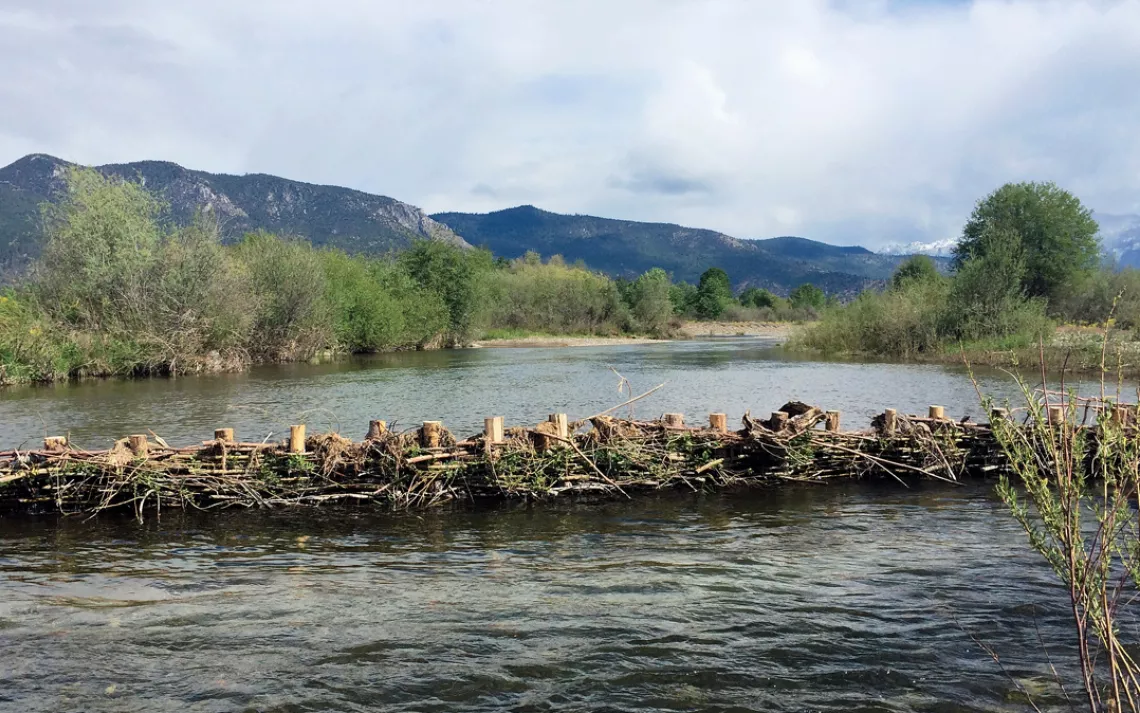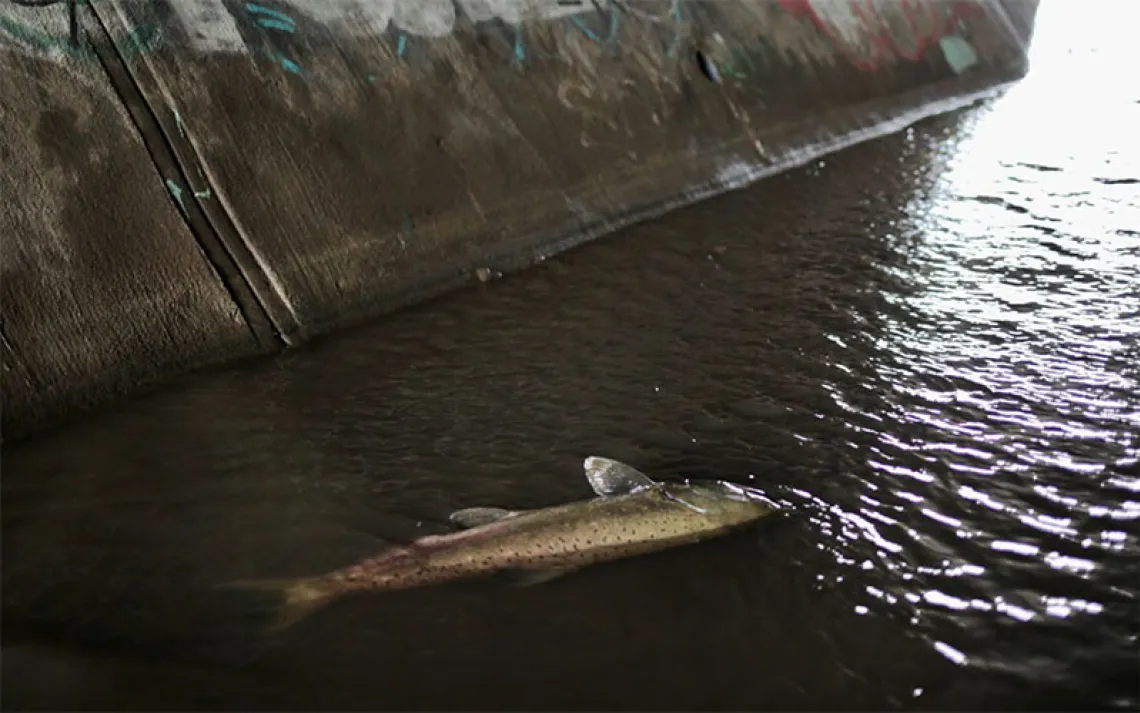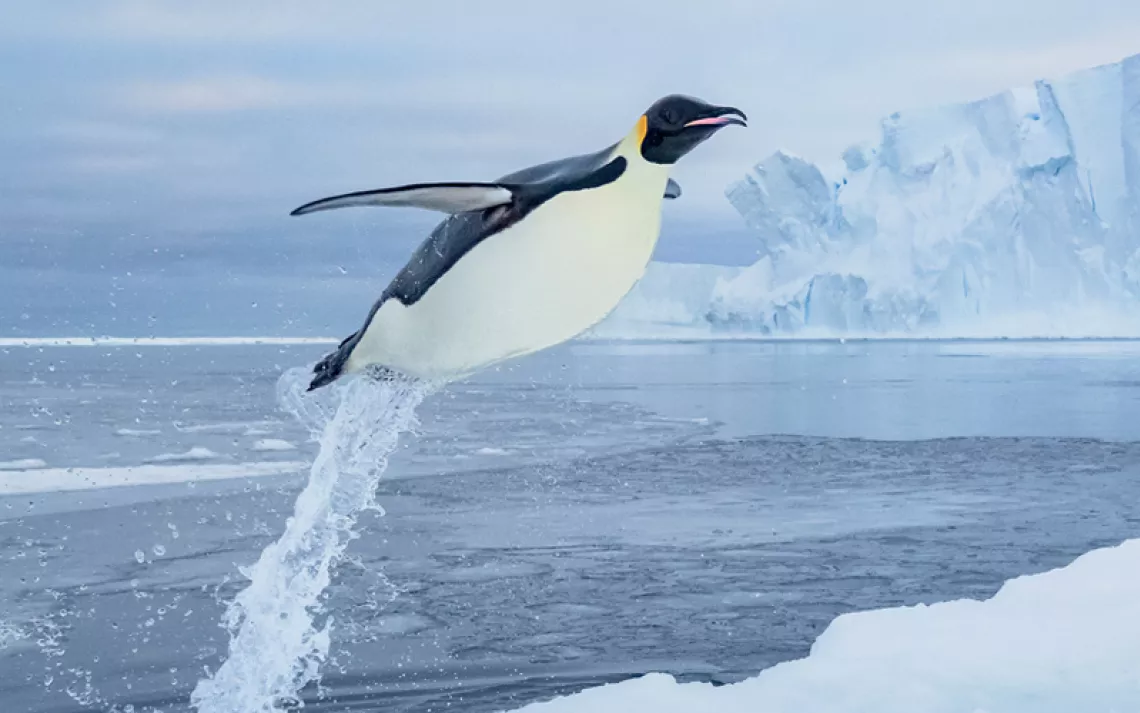Manmade Beaver Dams Save Fish

One of three beaver-dam analogues on the Scott River in Northern California. | Photo courtesy of Charnna Gilmore/Scott River Watershed Council
Steelhead lurked in logjams in central Washington’s Wenas Creek 150 years ago, and its shaded waters might have lapped Mike Tobin’s feet if he’d stood on this bank then. Thanks to overgrazing, dewatering, and a century-old dam, the treeless creek now cuts six feet into the ground. It’s too warm for steelhead and is bereft of their hiding places. Peak flows carve away the banks.
In the old days, when snowmelt sometimes overtopped the creek’s banks, cold water would leach back into the creek during the summer, blessing salmon with the cool spots needed to survive their rearing. To bring back such conditions, the streambed must regain its old elevation.
The natural solution: beavers. In the past, “problem” beavers have been relocated to streams in need. Their dams back up the water, raising streambeds while still allowing passage for salmonids. The downside is that it costs money to trap beavers and house them prior to relocation, and despite the offer of seemingly ideal habitat, they sometimes leave. Besides, says Tobin, manager of the North Yakima Conservation District, “you can’t control where they’re backing up water.”
Enter Michael Pollock of the National Oceanic and Atmospheric Administration, who pioneered the idea of reinforcing blown-out beaver dams with posts. “That’s the best strategy, because they’ve already done all the work,” says Pollock. “We’re just reducing the dams’ failure rate.”

Sign up to receive Sierra News & Views
Get articles like this one sent directly to your inbox weekly.
With this action you affirm you want to receive Sierra Club communications and may vote on policy designated by the Sierra Club Board.
Pollock suggested dispensing with beavers altogether. At Wenas Creek, they are putting in manmade beaver-dam analogues by pounding posts into the streambed and then weaving branches among them. A few workers can run a post pounder with biodegradable hydraulic fluid and achieve hydrological results similar to those of an imported-beaver colony. The result, says Tobin, is that, “fish and farms coexist in the same reach.”
This article appeared as "Leave Out the Beaver" in the November/December 2015 print edition of Sierra.
 The Magazine of The Sierra Club
The Magazine of The Sierra Club



